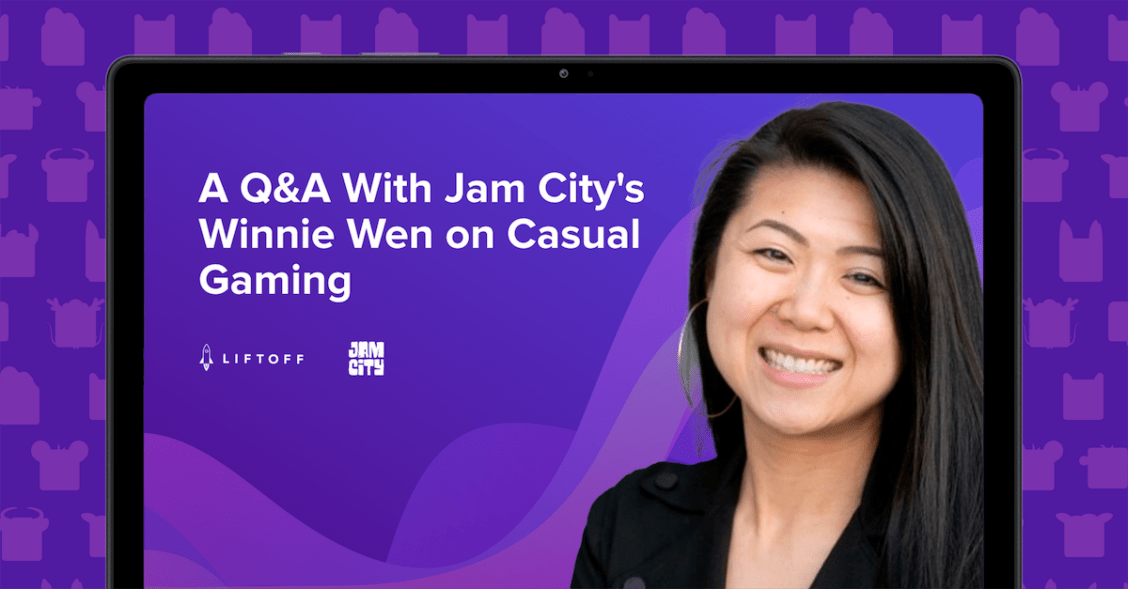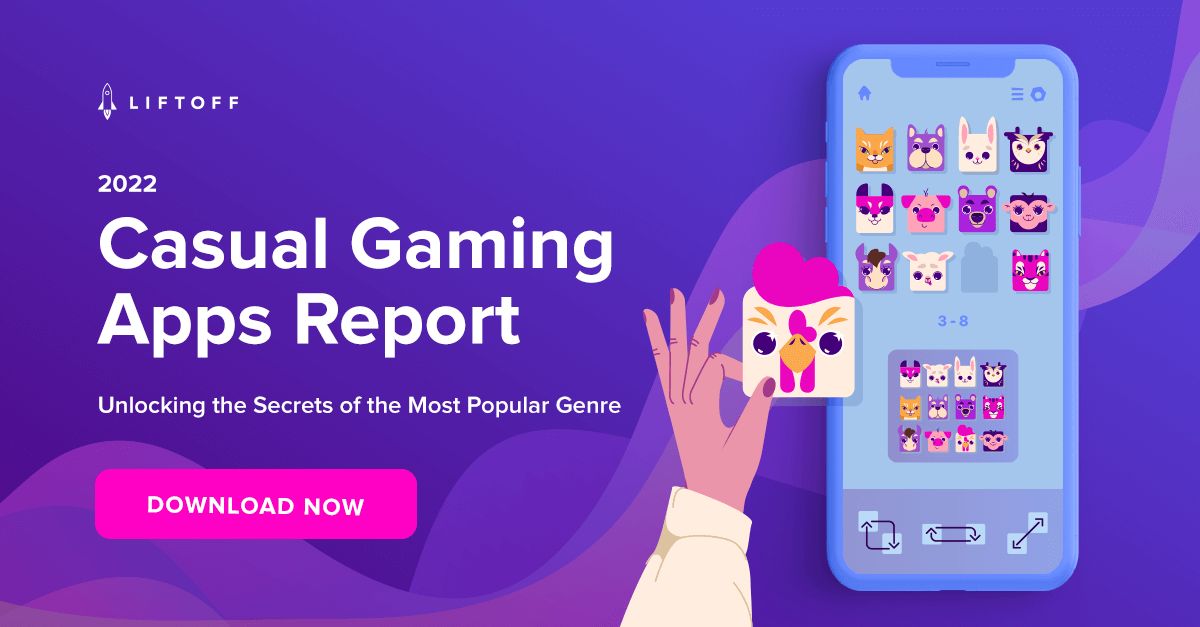
A Q&A With Jam City’s Winnie Wen on Casual Gaming
Winnie Wen is the Senior Director of User Acquisition at Jam City, an award-winning mobile game company. With experience marketing popular casual gaming titles such as Words With Friends and FarmVille, as well as working with licenses including Disney, Harry Potter, and DC Comics, Winnie has a uniquely informed perspective on marketing mobile games to attract and retain a wide audience. She specializes in user acquisition, strategic marketing, and mobile advertising.
What is Jam City’s approach to reaching audiences, like casual players, and standing out from the competition in 2022?
Creative is a big lever. The industry has been around for a while and there are many outlets and channels we leverage. But, there’s a lot of noise as well. Ultimately, creative is the first touchpoint. It’s the first area where we connect and speak to the users — tell them what our product is, how we can appeal to them, what our value proposition is, and how to get them to the next part of the funnel.
What unique creative considerations go into reaching your specific demographics?
It’s important to identify the core demo’s persona and understand their gameplay motivations. On top of that, it’s good to stay on top of current market and industry trends, and competitors’ strategies.
What is the market trend? What is the industry trend? What are our competitors doing that we know is engaging?
There’s been an influx of misleading ads in the industry. I remember seeing a lot of ads that had nothing to do with the game. I am curious, for those products, about their downstream KPIs. At the end of the day, we are striving for a balance of top-of-the-funnel metrics in addition to downstream KPIs.
Have you found your core audience responds well when creative aspects are more reflective of what you do in the game versus that aspiration?
The optimal solution is to have a little bit of both. We want to make sure that the creative asset we’re using is exciting and it grabs your attention. Going back to the earlier point: Given the amount of noise and ads that users are bombarded with, they’ve probably become numb to ads. A creative asset needs to captivate their attention. It needs to be a thumb-stopper. It’s a balance of being aspirationally captivating while incorporating gameplay from the product.
How do you find that balance? What tools does Jam City use to make these measurements?
We evaluate performance based on top-of-the-funnel metrics, such as click-through rate, conversion rate, and IPM. Then we also evaluate downstream metrics and look at various KPIs. Ideally, we want healthy metrics for both ends — top-of-funnel and downstream — but that isn’t always the case. We conduct analyses to evaluate returns and performance to determine the optimal balance and the potential trade-offs. For example, maybe the top of the funnel is a little bit softer, but it translates to a stronger downstream — or vice versa.
How has this changed since you started in mobile gaming?
Oh, it’s changed drastically! I remember when I first joined the mobile space, it was all about downloads and installs. It was all about charting. Once you hit the top X spot on the app store, then the organics will follow. We didn’t look at LTV. We didn’t look at downstream KPIs. Fast forward to now — we’re looking at the metrics (top and downstream) in such granular detail that UA managers are essentially data ninjas.
The interesting thing is, if you think about how long the industry has been around, I feel like we’re just scratching the surface. When I started in the industry over 10 years ago, we were just pumping installs. Now we’re looking at LTV, ROAS, and other metrics that provide insights to performance. Then last year, Apple rolled out ATT — App Tracking Transparency — where there are now a lot of parameters and guardrails. Then Google announced that they’re probably going to do something similar. So the industry’s been hit with a lot of curveballs. At the same time, I feel like we are at the forefront of mobile marketing and measurement. To be able to participate in and be part of the group that defines how we’re moving forward in this next chapter? It’s pretty exciting.
Where do you see the industry headed next?
I see us moving forward with a unified marketing approach. I don’t think it will be performance marketing versus brand marketing versus awareness. If we think about Apple’s rollout last year — in terms of the privacy restrictions — and then Google following suit in a couple of years, it will be more difficult to have granular user-level data. Developers need to come up with a solution for how they are going to measure performance as a whole.
The industry needs to consider not just performance marketing, but consolidate all marketing functions and disciplines and measure the unified marketing returns.
If you could have access to any measurement, what would it be?
I would love a solution in the future where I could easily get a read on incrementality, to measure the performance and returns of awareness campaigns, or any marketing non-direct response channels. There is value in awareness and brand campaigns. With performance, it’s attributable — Bob saw this ad, he clicked on this link, he downloaded the game — these are the results.
I would love to have a clear way of seeing all the touchpoints and clearly attributing where each user came from. I don’t know if that’s achievable, but that’s what I would love.
With a billboard or TV ad, we know that Bob saw the ad, and he likely went to the App Store or the Google Play Store and searched for the product. How do we tie that whole user journey together in terms of attributing Bob’s install to the TV ads, along with the billboard ads or other additional impressions he saw before that? I would love to have a solution of noting all the touchpoints and clearly attributing where each user came from.
Looking for more insights to grow your casual gaming business? Download our 2022 Casual Gaming Apps Report, packed with detailed CPI and ROAS analysis, insights from Mobile Heroes in the casual gaming field, and everything else casual game marketers need to know.
